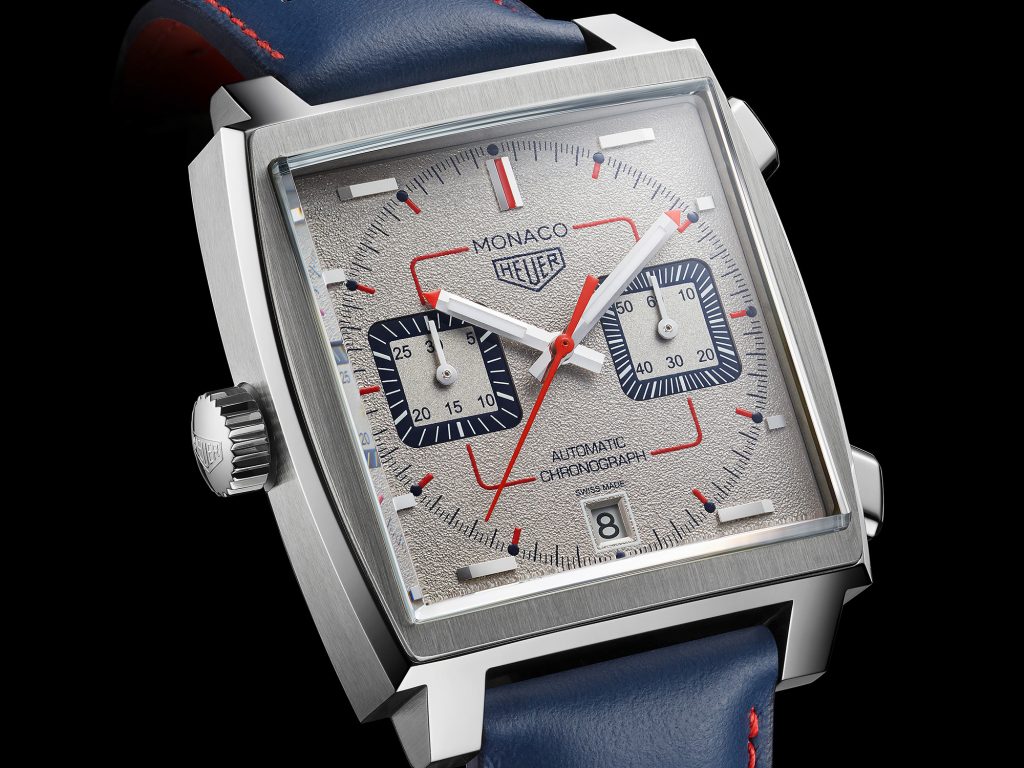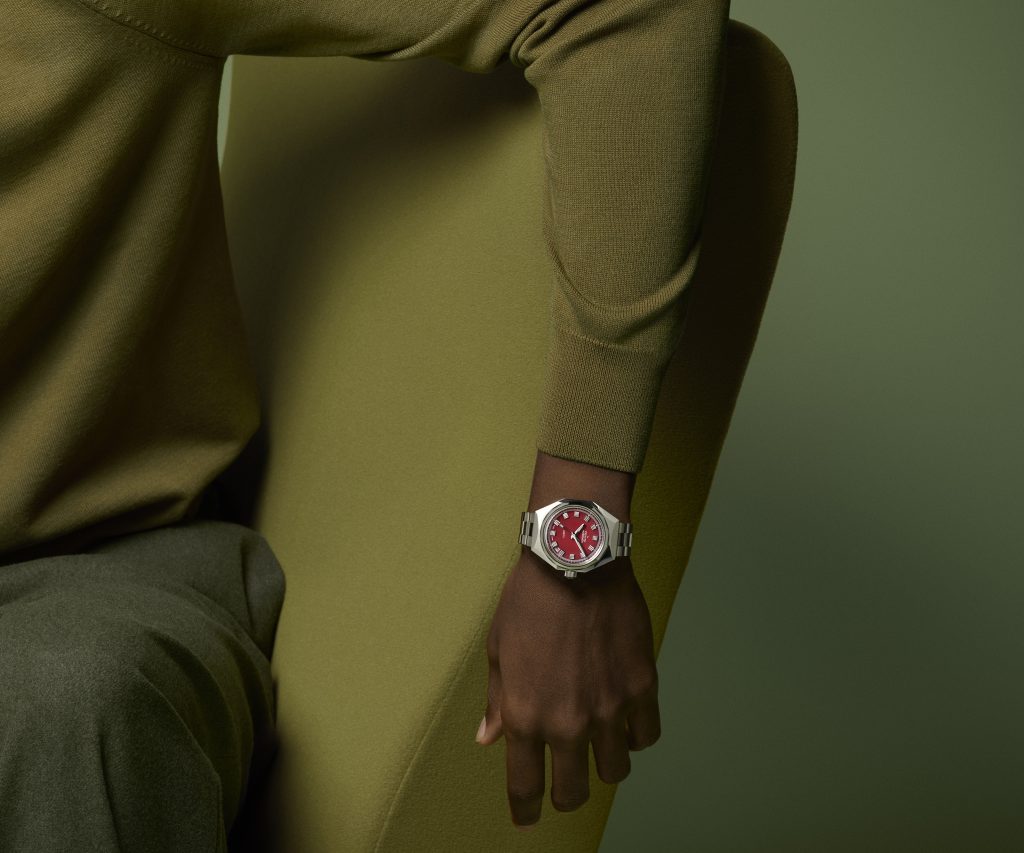Interview: Honoring TAG Heuer’s Monaco with Heritage Director Catherine Eberle-Devaux
Five limited edition commemorative versions are debuting around the world

Few wristwatches come close to the global recognition of the Monaco, which was created by TAG Heuer in 1969 to commemorate one of history’s quintessential Grand Prix races—held in its namesake location. Some 50 years later, the famed watch still makes a splash, not just in the world of horology, but also in the racing world that inspired it. With a distinct blue face, square shape, and groundbreaking mechanism, the iconic Monaco continues to be an in-demand timepiece. It remains relevant and captivating for these reasons and so many more. To get a better understanding of the vivid history and cultural significance of the piece, we spoke with TAG Heuer’s longtime heritage director, Catherine Eberle-Devaux.

What has made this watch so iconic?
When you’re looking at it, I think that you have many of the answers. It is square, it is blue, it has the chrome on the left side. That makes it completely different from any other watch. This is the only watch that is bearing that description, and it is so because Jack Heuer decided it. You know that we are celebrating the 50th anniversary of the Monaco, but what is even more important than the Monaco is the calibre that was inside 50 years ago. That is the first automatic chronograph movement.

Can you tell us more about the development of the chronograph?
We had automatic watches for many years, but the watchmakers were facing true difficulty in making the chronograph small enough to make it automatic for a wrist size. So many of the watch companies were doing research on that, trying to find a way how to do it. Heuer was the first to figure out how to do it. The automatic chronograph movement launched with the Monaco watch on the third of March 1969, both in Geneva and in New York.
It looked exclusive, exquisite
Jack wanted to have his Calibre 11 in the main collection, along with the most successful pieces, the Carrera and the Autavia. He wanted a third one. A striking one, different, to illustrate this new movement. When he was presented this square case, he said, “OK, that’s it. I have the whole concept. This is avant-garde, I have a square case for an automatic movement.” This is how the Monaco was born. And the name comes from the Monaco race, and then the Monaco city, because he says it sounded nice. It was easy to pronounce, and it looked exclusive, exquisite. So that’s how it was named, and of course it has this auto racing connection.

And now, you’re celebrating the Monaco all over the world?
Yes. For the 50 year anniversary, we wanted to illustrate all the sides of the Monaco. The Monaco is glamorous. The Monaco is auto racing, history, architecture, design, and innovation. Five reasons, five decades, five dreams for designers [to create commemorative pieces from]. We decided to keep the shape of the case exactly as it is. As a main code with a crown on the left side. And to play with the colors of the dials.
The green version illustrates the ’70s, that was launched in Monaco during the Grand Prix. It already has a nickname around the collector’s world, the “Big Pickle,” they say. For the kind of color, the greenish color. The red one, that was launched in Le Mans and was deep red. First time ever Monaco used red, and you see the one that we’re launching tonight, that illustrates the ’90s.

Do you think that when they launched this watch it forced everyone in the industry to be a little more innovative, a little more creative and to think outside the box as it relates to incorporating new movements and functionality into their pieces?
Definitely. It was a trendsetter. Also in terms of color, all the watches were black or silver dial, mainly. This one brought a bright blue, which was completely different and very, very daring. And then the colors started to come into the watch as a trendy object and not just as a timekeeper.
Steve McQueen loved the Monaco. How do you think the cultural relevance that it had because of McQueen impacted its future?
This is also a very paradoxical part of the legend. McQueen ended with the Monaco on his wrist because the piece was probably a little bit too avant-garde for the time. And the sales were pretty low. So when the property master called Jack Heuer asking for watches for the movie Le Mans, that he was filming at that time, Jack had no Carrera and had no Autavia to put on the wrists of all the drivers. So he brought one Carrera, one Autavia, but six Monacos and of course Steve McQueen was wearing his overalls with the Heuer patch, so he had to have a Heuer chronograph on the wrist. So the obvious solution to this problem was the Monaco, and by chance, he thought that it was a cool watch, matching very well with the blue of his eyes and with his nickname, the “King of Cool.”

That’s truly incredible.
The Monaco is all about paradox. It’s also a lot of about maturing. It was a little too avant-garde in ’69, and it took years to mature and to become a lifestyle icon. So it’s also a nice thought for our period of time that is so quick and so fast on its desirability.
It’s great that even now when you look at it in 2019, it remains striking and looks so different from most pieces on the market.
No wrinkle on it. Even 50 years after that, no wrinkles.
Images courtesy of TAG Heuer












